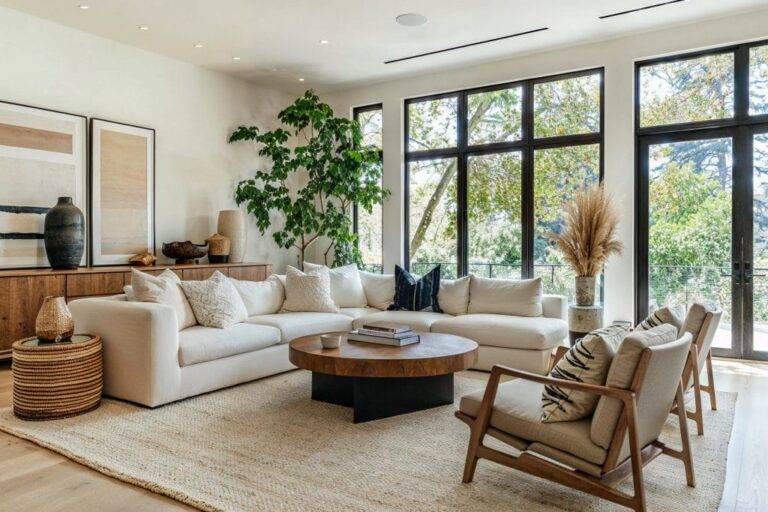Creating a space that feels cohesive, welcoming, and a true reflection of your personality is the ultimate goal of home décor. While many homeowners focus on individual elements—furniture, artwork, and lighting—what truly makes a space stand out is a unifying theme. A well-executed theme brings harmony and balance, allowing various design elements to complement one another and flow seamlessly throughout a room or an entire home. Whether you’re refreshing your current space or starting from scratch, understanding how to effectively implement a theme can elevate your décor to new heights. Here are the top 10 theme tips to help you achieve better home décor that feels both stylish and personal.
1. Define Your Personal Style
The first step in creating a cohesive theme is understanding your own personal style. Whether you’re drawn to the calm neutrality of Scandinavian design or the bold, eclectic vibes of bohemian décor, knowing what appeals to you will serve as the foundation for your home’s theme. Start by considering how you want to feel in each room—do you prefer serene and minimalist surroundings, or do you thrive in spaces brimming with character and personality? Once you define your style, the rest of your choices will fall into place more easily.
Take time to explore various design styles, from traditional and rustic to contemporary and industrial. Browse through interior design magazines, visit design showrooms, or explore online platforms like Pinterest and Instagram for inspiration. Remember, your personal style is unique to you, so don’t be afraid to mix elements from different styles to create a look that feels true to your tastes.
2. Choose a Color Palette and Stick to It
Color is one of the most powerful tools in home décor, and choosing the right palette is crucial when creating a unified theme. Start by selecting a primary color that will dominate the space, and then choose complementary or contrasting secondary colors to add depth and variety. For example, a neutral color like soft gray or beige can serve as a versatile backdrop, while accents of navy blue, mustard yellow, or forest green can add interest and vibrancy.
Once you’ve chosen your color scheme, be sure to apply it consistently across the room or throughout your entire home. A cohesive color palette will help create a sense of unity and flow, ensuring that all design elements work together rather than competing for attention. Additionally, incorporating varying shades of your primary color can create subtle visual interest without disrupting the overall theme.
3. Create a Focal Point
Every room needs a focal point—a central element that draws the eye and sets the tone for the space. The focal point can be a statement piece of furniture, such as an oversized sofa or a beautifully crafted dining table, or it can be an architectural feature like a fireplace or large window. Whatever you choose, make sure the focal point reflects the theme and style you’re going for.
For instance, if your theme is coastal, a large piece of driftwood art or a statement chandelier made of shells can serve as the room’s focal point. Alternatively, if you’re creating a contemporary, minimalist theme, a bold piece of modern art could take center stage. Once you’ve established the focal point, arrange the surrounding furniture and décor in a way that draws attention to it, ensuring that the room’s layout feels balanced.
4. Mix and Match Textures
Texture is an essential element in creating depth and interest in your décor, and it can help tie together the various aspects of your theme. While color sets the mood, texture adds dimension, making a room feel more inviting and layered. A good way to incorporate texture is by combining different materials, such as wood, metal, glass, and fabric.
For example, if you’re going for a rustic or farmhouse theme, you might pair a reclaimed wood dining table with soft linen chairs and a wrought-iron chandelier. In a more contemporary space, mix sleek leather sofas with velvet throw pillows or incorporate geometric patterns through area rugs and wall art. The interplay of textures adds a tactile quality to the space, making it more dynamic and visually appealing.
5. Balance Functionality and Aesthetics
When selecting décor for your home, it’s important to remember that form should follow function. While aesthetics are essential, the functionality of the pieces you choose plays an equally important role in creating a harmonious theme. A room may look beautiful, but if it’s not practical for everyday use, it won’t feel comfortable or livable.
For instance, when decorating a living room, choose furniture that not only complements the overall theme but also suits the needs of the space. A stylish sectional sofa should also be comfortable for lounging, while a coffee table might be both beautiful and functional with built-in storage. Whether it’s a well-placed lamp for reading or a spacious bookcase that doubles as décor, the goal is to ensure that your theme is not only visually cohesive but also serves the practical needs of your lifestyle.
6. Incorporate Art and Personal Touches
Art is one of the most effective ways to add personality to your space, and it can be a powerful tool in reinforcing your theme. Whether it’s a large painting above your fireplace or a gallery wall of smaller prints, art has the ability to tie the room together. When selecting artwork, choose pieces that resonate with your theme and complement the color palette you’ve established.
Beyond art, personal touches like family photographs, travel souvenirs, or cherished heirlooms can make a room feel more authentic and reflective of your story. Don’t be afraid to display items that hold sentimental value—these pieces will not only enhance the theme but also infuse the space with warmth and personality.
7. Embrace Lighting as a Design Element
Lighting is an often-overlooked aspect of home décor, but it can have a dramatic impact on the overall theme of a room. The right lighting can create the desired mood and highlight the design elements that are most important to your theme. Consider layering different types of lighting—ambient, task, and accent—to add versatility and depth.
For example, if you’re creating a romantic, vintage-inspired theme, opt for soft, warm lighting through the use of antique-style chandeliers, table lamps, and wall sconces. For a more modern theme, consider using sleek pendant lights or LED track lighting to illuminate the space in a way that complements clean lines and minimalist furniture. The lighting choices you make should support and enhance your theme, ensuring that the room feels both functional and beautifully lit.
8. Use Mirrors to Expand the Space
Mirrors are an invaluable tool in home décor, especially when working with smaller spaces. Not only do they reflect light, making a room feel brighter, but they also create the illusion of more space. Strategically placing mirrors in key areas—such as across from a window or above a mantel—can enhance the theme while improving the room’s overall flow.
In a minimalist or modern design, opt for sleek, frameless mirrors to complement the clean lines of your furniture. For a more traditional or vintage-inspired theme, choose ornate mirrors with intricate frames that add character to the space. Whatever your style, mirrors can play a significant role in amplifying the impact of your theme.
9. Consider the Flow of Your Home
When designing a home, it’s important to think about how the rooms connect and flow into one another. While each space may have its own theme or personality, there should still be a sense of continuity throughout the home. This doesn’t mean every room should look identical, but there should be common threads that tie them together.
For instance, if your living room is designed with a coastal theme, you can extend that aesthetic into the dining room by incorporating similar colors, textures, or décor elements like driftwood or seagrass. The goal is to create a natural flow from one space to the next, making the transition between rooms feel seamless and unified.
10. Stay True to Your Vision
Lastly, one of the most important tips for achieving a better home décor theme is to stay true to your own vision. While it’s tempting to follow design trends or try to replicate someone else’s style, the best home décor is always personal. Your home should reflect who you are and how you want to live in it.
Trust your instincts when selecting furniture, décor, and accessories. If you love a piece of art, a particular fabric, or a vintage item that speaks to you, incorporate it into your space, even if it doesn’t perfectly align with a trendy theme. A room designed with intention and authenticity will always feel more inviting and comfortable.
Conclusion
Home décor is an art, and the theme you choose can make a significant impact on the overall feel of your living space. By following these 10 tips—defining your personal style, choosing a cohesive color palette, incorporating art and lighting, and staying true to your vision—you can create a home that not only looks beautiful but also feels like a true reflection of who you are. Whether you prefer a minimalist haven or a cozy bohemian retreat, the key to better home décor lies in the careful curation of design elements that come together to tell your story.
















